Like most of us, Robbie Grove started out in aviation building model airplanes. Unlike most of us, this progressed to building a VariEze as a teenager, followed by an original design two-seater, the GR-2 Whisper (which was featured on the covers of KITPLANES and Homebuilt Airplanes magazines). He later designed and built a Formula 1 raceplane, the GR-7, as well as designing and building “a bunch” (his words) of wings, primarily for Formula 1 and racing biplanes as well as aerobatic monoplanes.
Self-taught in engineering, his composites skills and ability to oversee an airplane project in its entirety landed him a job at Teledyne Ryan in the early days of UAVs, from whence he ultimately ended up working on the design and construction of the aft end of the Northrop Global Hawk. If you read the KITPLANES article on Craig Catto [“The Spin Doctor,” August 2014], this all sounds like a vaguely familiar “foundation story”—and in fact, Craig and Robbie are good friends.
Grove Aircraft Landing Gear Systems, which began in 1983, is located east of San Diego at Gillespie Field, right where Grove started out building the VariEze. As you may be aware, Grove makes landing gear, wheels, and brakes for a large number of Experimentals, but at least half their market is for certified aircraft, with UAV gear also being a significant part of the business.
The original impetus to make gear came from his composites company in 1993. Working on gear with a local manufacturer had proven frustrating. “At lunch one day we asked ourselves ‘Can’t be that hard, can it?'” The answer turned out to be “very painful,” laughs Robbie. “We talked to a bunch of people we knew and got the first gear built, but it was just very difficult to get the landing gear the way it needed to be. Getting it machined, bent, heat treated—we didn’t know any of that stuff.” Clearly, they have since figured it out, and that first landing gear is still flying today.
Grove decided he wanted to be a distributor for Parker (aka Cleveland) wheels and brakes, but they were not interested, so Grove decided to start manufacturing those items as well. He started out with one CNC mill and one CNC lathe in 2000, and in 2005 he closed the composites shop to focus strictly on landing gear. Grove Aircraft now has nine Haas CNCs and manufactures about 1500 sets of landing gear a year (and more than 15,000 to date). This includes several hundred TSO’d wheel and brake assemblies, which has been their main focus the last five years. There’s also occasionally strange or exotic work—master cylinders for the Focke-Wulf FW190, Vought F4U Corsair, Messerschmitt Bf 109, and “weird UAV gear.”
Robbie Grove engineers all of the company’s products. In addition, he handles tech support and general problem solving, gun drills the gear, and personally assembles all wheels, brakes, and master cylinders before they get shipped out the door. “My goal is to never run the CNC machines—that is not the best use of my time. I don’t machine, but I know all about machining. I am always thinking of how we are going to machine a piece, how we are going to hold it, how we can reduce steps in the manufacturing process by designing them out. When I design something that is really new, I’ll bring it out to the guys in the shop for feedback, before we ever make anything. And we make changes along the way if necessary. It’s always a challenge; that is why I like the engineering part of it. And I am the only engineer,” he laughs, “so I don’t have to argue with anybody.”
Gear is CNC waterjet cut from 1.25-inch thick sheets of 7075 aluminum and then machined and gun drilled before being sent for the first round of heat treating.
Gear Manufacturing
Grove gear starts life as a thick (1.25-inch) plate of 7075-T6 aluminum. The profile is cut with a CNC water jet, and then decked (i.e., thinned) down to the desired thickness, for example 1 inch or 7/8 inch. It is machined to final shape, drilled, contoured (if it has an airfoil cross section), and gun drilled for brake lines. It is then sent to a heat treater to be annealed in the O condition, so that when it returns to Grove’s shop, it is soft enough to be bent to shape in their presses.
After bending to the desired shape, the gear is sent back to the heat treater. They treat it again, quenching it in a glycol solution, which takes it to W condition (a middle hard condition). Then they put it in a freezer and keep it there until Grove picks it up. The reason for only taking it to W condition, rather than back to T6, is that the gear warps from the shock cooling of quenching. Grove needs to straighten out the warpage, and a T6 condition would prevent that. W is just soft enough to allow the necessary tweaking, but Grove notes that as soon as they remove it from the freezer, the gear starts getting harder by the minute and the clock is ticking: they have eight hours to get the gear straightened before it becomes too hard for further tweaking.
Once any warpage is removed, the gear goes to the heat treater for the third time, where they take it back to T6 condition. Going from W to T6 can induce a small amount of final warpage—a tenth of a degree or so, says Grove—but there’s no quenching so warpage is usually minimal, and that small an amount is easily straightened.
Landing gear is inspected for dimensional accuracy after undergoing bending. In this state, the gear is in a soft condition (O). It is then sent back to the heat treater, where it will be brought up to W condition. W allows any necessary final tweaks for a few hours after being brought out of cold storage. The gear then goes back to the heat treater for the third time for a heat-treat/aging process to bring it to T6 condition.
Wheel Manufacturing
Wheel manufacturing is completely different, and Grove offers wheels in cast magnesium, cast aluminum, and billet aluminum. So what’s the difference?
The magnesium wheels are sand cast, which is cheaper than billet since there is both less machining (for example, the interior of the wheel is largely left in the raw cast condition) and less material cost since very little of the casting gets lost to machining. However, the material properties are not as good as wrought bar stock. Because of that, cast wheels are designed to a safety factor of 2.0 vs. 1.5 for billet.
In comparison, billet stock can be 6-12 inches in diameter, much of which must then be machined away. “The other way to build them is a forging, which is better, but it is very, very costly,” says Grove. “Although that gives the proper grain flow when you do that.”
Material selection is largely a matter of sales volume, although environmental factors can play a part as well. For low-volume wheels, billet is usually used, whereas for high volume wheels it makes sense to invest in a casting. “In some cases where weight is a big deal, but we want to stick with aluminum, I can make it out of billet for almost the same weight as a magnesium part [since the aluminum billet only needs a safety factor of 1.5 as compared to the safety factor of 2.0 for magnesium, which makes the metals more equal on a strength-to-weight basis], but you have the benefit of aluminum not being so corrosive like the magnesium is,” says Grove. “For example, all of the wheels that go on floats and amphibians have to be aluminum; you can’t use magnesium there.” For calipers, magnesium is also the preferred material where possible, though again sales volume might dictate using aluminum.
Looking at an assembled master cylinder assembly, I ask Robbie how he learned to make these complex parts. “You just do it. You just go in there and figure something out, and you make some, and they don’t work. So you go work on it some more, and you finally get it to work, and you sell a bunch. Then after a while, you come up with a better idea and work on it some more…and after 15 years, you’ve got it figured out. But if you never get started, you’ll never figure it out.”
Cool Tools
You don’t go into the shop of a guy like Robbie without seeing a couple of pretty cool tools. Two that jumped out at me were Robbie’s gun drill and wheel dyno.
As with Grove’s initial foray into gear making, gun drilling also resulted from the frustration of being dependent on an outside shop that just couldn’t do the job right. “In the beginning we sent the gun drilling to a place in Los Angeles, which was a nightmare because it took them a month, it cost a lot of money, and they never put the hole in the right place. So we decided to do our own.
“We found a gun drill machine, but what it actually turned out to be was a Pratt and Whitney WW-II-era machine-gun barrel-reaming machine. It took us about six months to turn it into a gun drill. The reason it took so long is that we thought it was a gun drill machine, but it wasn’t—it didn’t have the right kind of seals, rpm, or pressure.”
Unlike a normal bit, the gun drill does not peck. Rather, oil is pushed at high pressure through the center of the rotating custom-made bit, cooling the head and taking away fine chips as it exits along a V-notch grooved along one side of the bit.
“There are a lot of things going on in this machine. The biggest thing you have to figure out is how to get 1750-psi oil into a drill bit that’s rotating at 7000 rpm. We got a huge education on that and used it until about 2000. The problem was, it only drilled 37 inches, so I built this new machine, which drills about 47 inches. And I’m getting ready to build another one that is basically CNC.”
The braking dyno is across the taxiway in the testing area. Dynos, I should say, since Grove has two. But the dyno built for certification purposes is an impressive assemblage of steel: Large enough for a 31-inch tire, it sports nine 1-inch-thick metal plates 47 inches in diameter, in addition to the main flywheel. With a total mass of 5227 pounds, it is capable of spinning up to 800 rpm and over 1 million foot-pounds of kinetic energy. In addition to this are machines to cycle test master cylinders and brake calipers for PMA certification, which requires 100,000 pressure on/pressure off cycles and 5000 overload cycles. “We had to build the test equipment to do all that,” Grove explained. “It’s all simple equipment now that you stand back and look at it, but when you are trying to dream up what device to build, at first it can be overwhelming. But it would be very expensive to go out and have someone custom design and build this for us.”
Grove brakes undergoing brake test on the dynamometer. Note the disc is actually turning cherry red!
Quality Control
Clearly Robbie is a pretty can-do guy, so it seems natural that aside from raw materials sourcing and heat treating, Grove Aircraft manufactures almost everything in-house. “With the exception of forgings, castings, and hardware like bearings, brake pads, etc., we make everything here. We do all the machining here. I like to have control over manufacturing,” he said.
I asked Robbie if he sourced anything from out of the country; 100% made in the USA is pretty rare these days. “The only product we source out of the country is our friction material. Everything else is made in the U.S. I’ve gone the other route—I’ve gotten stuff out of China, out of India, in terms of steel forgings and steel castings, but the quality is all over the map. You don’t know when or even if you are going to get the stuff. It’s cheap, but it’s junk, and in the big picture, it costs more.
“The other problem is that when you start certifying stuff, if those countries are not on our bilateral FAA agreement, you have to qualify every single item you bring in. If we were bringing in brake disks for instance, we’d have to pull samples from every lot and get them tested at an approved lab. Even if you get the C of C (Certificate of Conformance) from the manufacturer, it doesn’t mean anything; you still have to test it and prove to the FAA that it is what they say it is. I’ve been through all that, and it is not worth the hassle.”
Grove’s tight control of manufacturing has eased the way for parts certification. All parts have a control number and associated paper trail for the FAA. This guarantees traceability all the way through the manufacturing process. “We do the same whether it’s a homebuilt part or an FAA part. We have one quality control system that is approved by the FAA, and everything is done under that one system,” says Grove. “The only difference between a homebuilt wheel and a certified wheel is the label we put on it—otherwise they are identical. We make a lot of stuff that is the same: For example, pretty much all our 5-inch wheels are TSO’d as well.”
One of the nice things about the paper trail is that all gear has a serial number and associated computer file. So if someone bends a gear with a hard landing, they can send it to Robbie, who can then pull up that gear’s file and (hopefully!) put it back the way it was.
Regrets, I’ve Had a Few…
In the course of our tour, I kept finding myself asking Robbie how he knew how to do this or make that, considering he really knew none of this in the beginning. “The key to knowledge is you don’t need to know it all, you just need to know where to get it. Whether it be people, or the internet, or whatever. You can do anything; you may not know how, but you can figure out how to do it. You need to be willing to make a lot of mistakes because you’re going to wreck a lot of stuff on the way. Knowledge costs money.
“It took a lot of years to get to where we are at. We started making landing gear in 1993, and we went from people who knew nothing about metal to where we are today. It was a lot of work, a lot of time, a lot of money. The only thing I regret about making wheels and brakes is that I should have started 10 years earlier!”

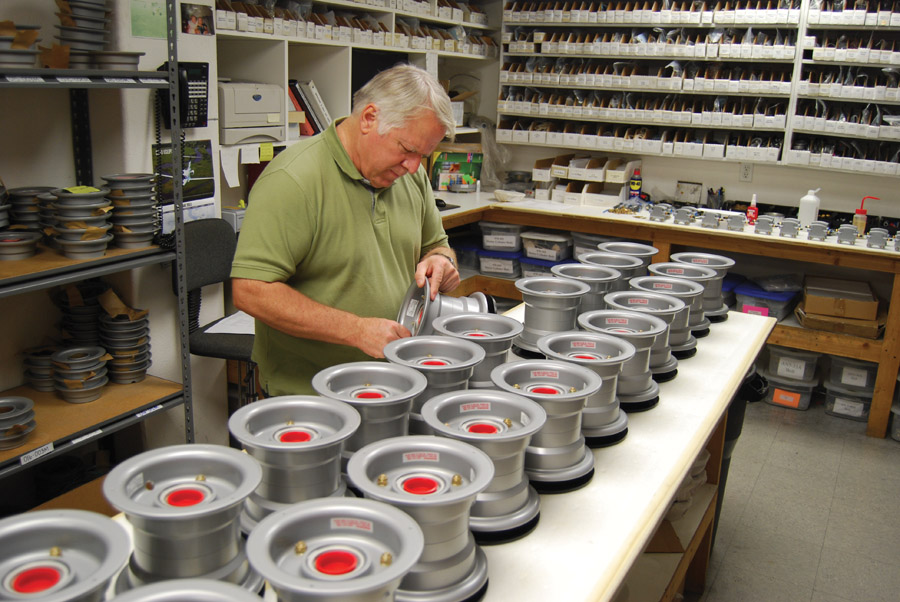
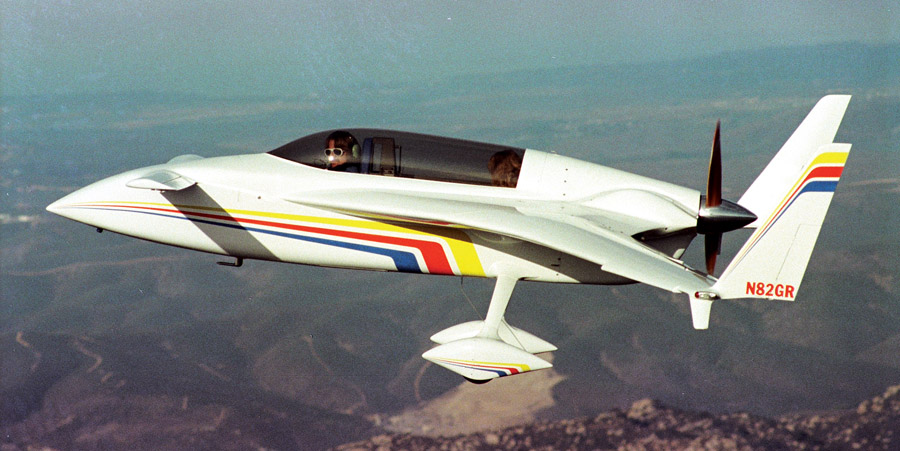

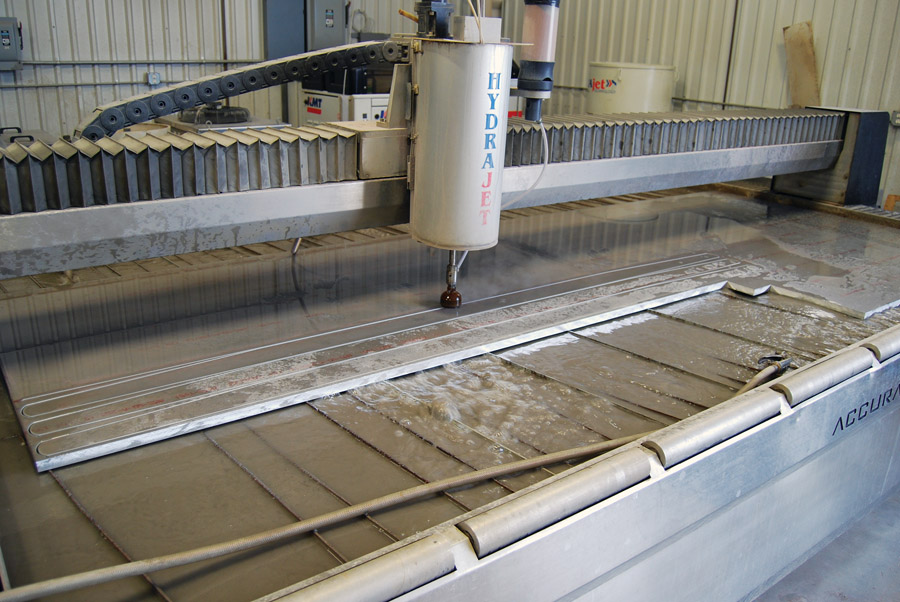



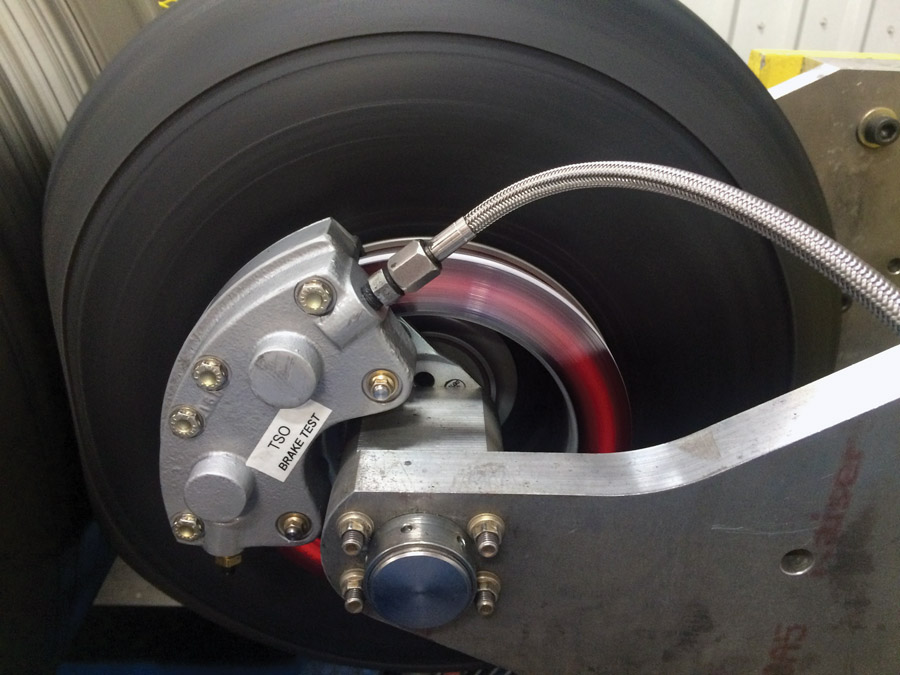
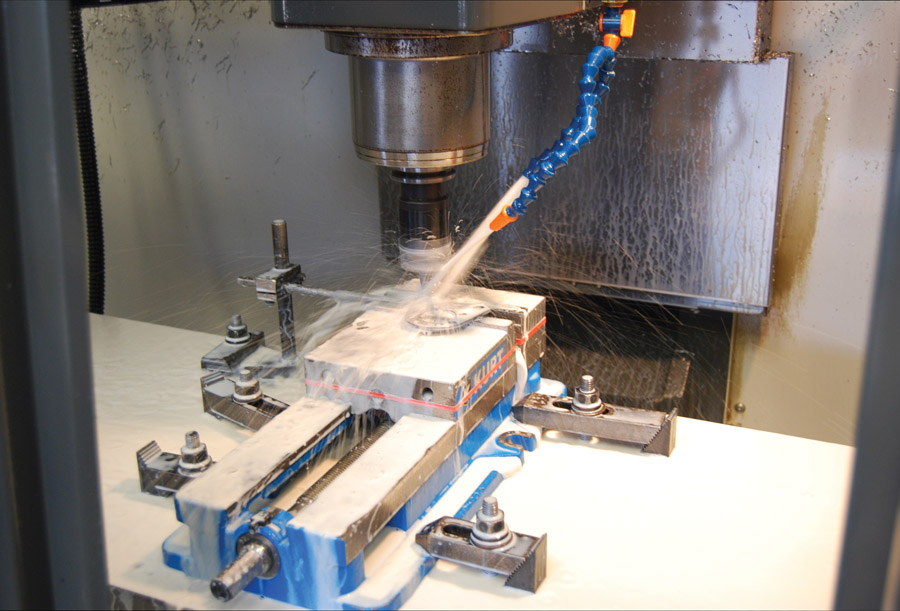

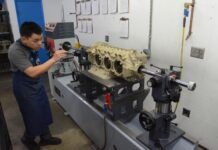

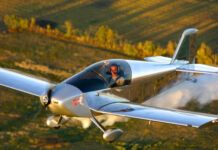


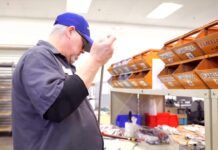
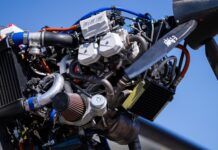

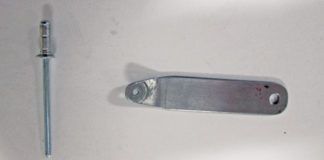
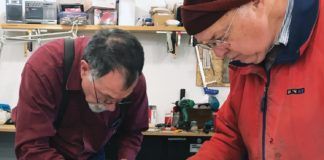
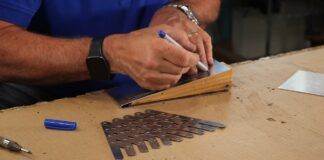
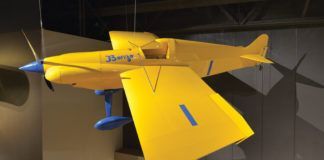
Bought Grove wheels and brakes for my Fly Baby ~10 or so years ago. Have worked flawlessly, very happy with them.